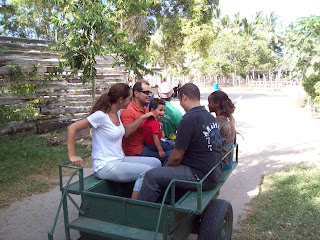Monday, March 26, 2012
Water Buffaloes at Dar es Salaam Zoo
Wild water buffalo are larger and heavier than domestic
buffalo, and weigh from 700 to 1,200 kg (1,500 to 2,600 lb). Their head-to-body-length is 240
to 300 cm (94 to 120 in) with a 60 to 100 cm (24 to 39 in) long tail and a
shoulder height of 150 to 190 cm (59 to 75 in). Both sexes carry horns that are
heavy at the base and widely spreading up to 2 m (79 in) along the
outer edges, exceeding in size the horns of any other living bovid. Their skin
color is ash gray to black. The moderately long, coarse and sparse hair is
directed forward from the haunches to the long and narrow head. There is a tuft
on the forehead, and the ears are comparatively small. The tip of the tail is
bushy; the hooves are large and splayed
Monday, March 19, 2012
Friday, March 16, 2012
Thursday, March 15, 2012
GIANT ELAND IN DAR ES SALAAM ZOO
 |
| Giant Eland Anterope found in Dar Zoo |
Giant eland are typically between 220–290 cm (7.2–9.5 ft) in length, stand approximately 150 to 175 cm (4.9 to 5.74 ft) at the shoulder, and weigh 440–900 kg (970–2,000 lb). Despite its common name, it is of very similar size to the common eland. The smooth coat is reddish-brown to chestnut, usually darker in males than females, with several well-defined vertical white stripes on the torso. A crest of short black hair extends down the neck to the middle of the back, and is especially prominent on the shoulders. The slender legs are slightly lighter on their inner surfaces, with black and white markings just above the hooves. There are large black spots on the upper forelegs. The bridge of the nose is charcoal black, and there is a thin, indistinct tan-colored chevron between the eyes. The lips are white, along with several dots along the jaw-line
Monday, March 12, 2012
OSTRICH AT DAR ES SALAAM ZOO
 |
| Ostrich at Dar Zoo |
An ostrich has been seen to pass an antelope in full gallop at 40 miles per hour, a feat which places it among the fastest of all birds, in spite of the fact that it does not fly.
Thursday, March 8, 2012
The porcupine found at Dar Zoo
The
porcupine, of course, easily recognized by its most notable feature,its
quills. Quill length on different parts of the body varies, from 1 inch up to
12 inches on the back. Usually the quills lie flat against the body, but if
danger threatens, the porcupine raises and spreads them. Scales on quill tips
lodge in the skin like fishhooks and are difficult to pull out. New quills grow
in to replace lost ones. Porcupines are most common in hilly, rocky country,
but they can adapt to most habitats. Excessively moist forests and the most
barren of deserts seem to be the only exceptions. They have even been found on Dar es Salaam Zoo.
Wednesday, March 7, 2012
Dar Es Salaam Regional Commissioner Mr Mecky Sadiq Visit Dar Zoo
Tuesday, March 6, 2012
Secretary Bird in Dar es Salaam Zoo
 |
| Secretary Bird in Dar es Salaam Zoo Paddocks |
This is the only member of the family Sagittariidae. It is a
large bird of open country, savannah and steppe, which can be seen stalking
across the plains in search of rodents, reptiles, large insects and, famously,
snakes. It has a surprisingly powerful kick which it uses to stamp on larger
prey. In addition to its normal "raptor" type diet it is also
attracted to bush and grass fires, where it feeds on the small animals which
fail to escape the blaze. Although it is usually seen walking it does have very
large, broad wings and is an accomplished flyer, using thermals to gain height
and soar across distances. Secretary Birds are territorial, normally occupying
areas of around 45-50 square kilometres,
Welcome to Dar Zoo
Subscribe to:
Comments (Atom)


















